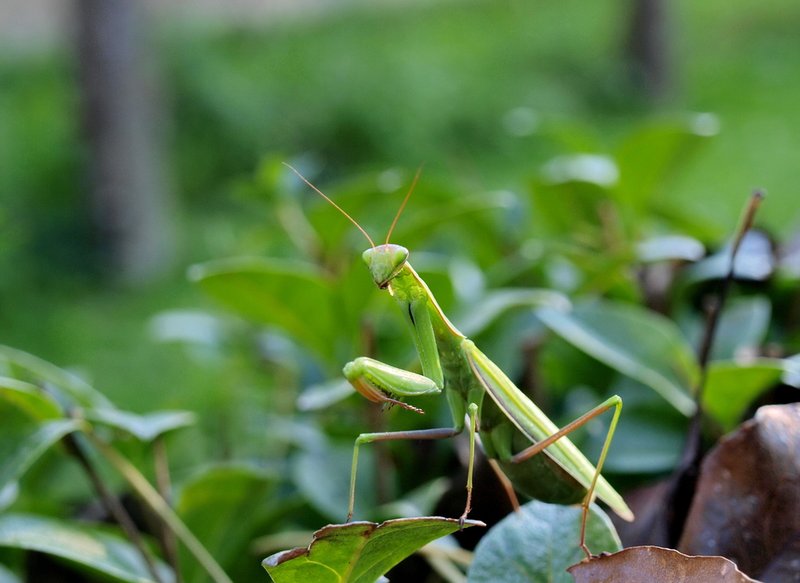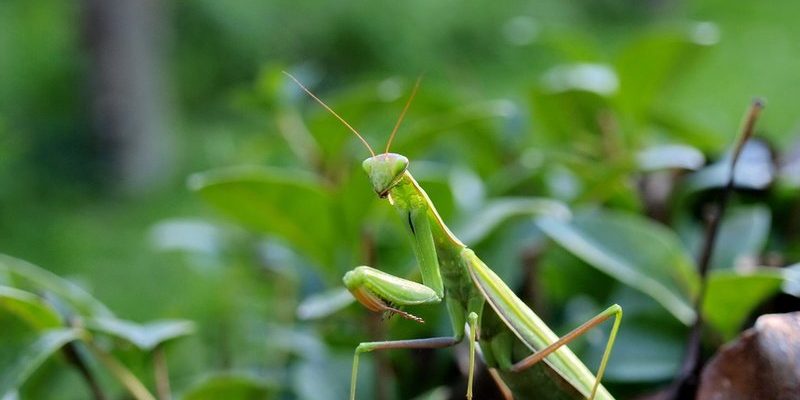
Imagine the praying mantis as nature’s ultimate bug bouncer. They’re not fussy eaters either; they munch on a variety of pests, helping to keep our gardens and crops free from harmful insects. Their predatory nature makes them vital for balancing insect populations. In this article, we’ll dive into why these fascinating creatures are so important and how their presence affects everything around them.
Understanding the Praying Mantis
Firstly, it’s essential to know that there are over 2,400 species of praying mantises worldwide. These insects are found on every continent except Antarctica, thriving in diverse environments. Their body structure is quite unique, featuring a triangular head, bulging eyes, and elongated thorax, which they use to blend into their surroundings. This camouflage is not just for show; it helps them ambush prey and avoid being eaten themselves.
Praying mantises come in various colors and sizes, adapting to their environment. Some are green, allowing them to blend in with foliage, while others are brown, mimicking dead leaves. This ability to camouflage is a crucial survival technique in the wild, helping them escape predators and sneak up on their next meal.
The mantis’s large, compound eyes provide excellent vision, which is vital for hunting. They can see movements from afar, and when they spot potential prey, they strike with lightning speed. Their front legs, equipped with sharp spines, act like a pair of grasping arms, capturing unsuspecting insects in a deadly embrace.
The Praying Mantis as a Predator
Here’s the thing—praying mantises are fierce predators, and their diet reflects that. They primarily feast on soft-bodied insects like aphids, flies, and caterpillars. This makes them incredibly valuable for gardeners and farmers who want to keep pest populations in check without resorting to chemical pesticides.
You might be wondering, how do mantises fit into the predator-prey relationship? They are what scientists call “active predators,” meaning they actively hunt down their prey rather than waiting for it to come to them. This behavior enables mantises to control the populations of various pests, creating balance in the ecosystem.
What’s fascinating is that they’re also known to engage in cannibalism. Female mantises sometimes eat their mates after or during mating! While this sounds brutal, this behavior helps in producing healthier offspring, ensuring the survival of the fittest.
The Benefits of Having Praying Mantises Around
Having praying mantises in your garden or backyard is like having a natural pest control service right at your doorstep. Here are some benefits of these incredible insects:
- Pest Control: They keep harmful insects like aphids and moths in check, which can destroy plants.
- Food Source: They provide food for birds and other wildlife, fitting into the food web seamlessly.
- Biodiversity Promotion: Their presence encourages a diverse ecosystem, promoting healthier soil and plant growth.
By maintaining balance, praying mantises contribute to a thriving environment. When you see one, it’s like having a little guardian working tirelessly to keep your plants healthy.
How to Attract Praying Mantis to Your Garden
If you’re excited about having these creatures around, attracting them to your garden is a great idea! Here are simple ways to make your garden a welcoming place for mantises:
- Plant native flowers: These attract a variety of insects, giving mantises plenty of food sources.
- Avoid pesticides: Chemicals can harm mantises and disrupt the ecosystem you want to nurture.
- Provide habitats: Leave some areas of your garden wild, with tall grass and shrubs where mantises can hide and hunt.
Creating a friendly environment for mantises not only benefits them but also enhances your garden’s health and productivity.
Praying Mantis in Popular Culture
Interestingly, the praying mantis doesn’t just play a role in ecosystems; it has also made its mark in popular culture. With its unique appearance and mysterious behavior, it often symbolizes patience and contemplation in various traditions. In some cultures, it’s even considered a spiritual guide.
Filmmakers and writers have also drawn inspiration from its predatory nature. The mantis is frequently portrayed as a symbol of danger or allure, showcasing the delicate balance of nature. This duality of beauty and ferocity makes the praying mantis a captivating subject in literature and art, reminding us of nature’s complexity.
Conservation and the Future of Praying Mantises
Unfortunately, many habitats are under threat due to urban development and climate change, and praying mantises are no exception. To ensure they continue playing their vital roles, conservation efforts are crucial. Protecting their habitats and promoting awareness about their importance in ecosystems can help preserve these fascinating insects.
Additionally, supporting local biodiversity initiatives, such as planting native species and maintaining natural habitats, can contribute significantly. It’s about understanding that every creature, no matter how small, has a part to play in the grand tapestry of life.
The praying mantis is a true marvel of nature, acting as a predator, a garden helper, and a symbol of the intricate balance within ecosystems. By understanding their role, we can appreciate the benefits they bring to our gardens and the environment. The next time you see a mantis, take a moment to watch it go about its business—there’s more going on than meets the eye.
So whether you’re working on your garden or just enjoying nature, remember: the praying mantis is not just a pretty face in the bug world; it’s a vital player in maintaining the health of our ecosystems. Embrace these little guardians, and together we can encourage a more vibrant and balanced world.

